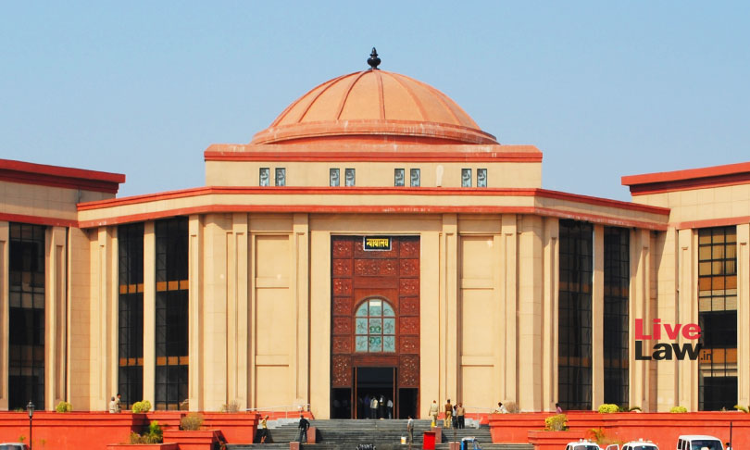- Home
- /
- High Courts
- /
- Chhattisgarh High Court
- /
- Decision Of Reassessment At...
Decision Of Reassessment At Dictation Of Higher Authorities Leads To Biased Outcome: Chhattisgarh High Court
Mariya Paliwala
5 Aug 2024 2:20 PM IST
The Chhattisgarh High Court has held that decisions of reassessment at the dictation of higher authorities lead to biased outcomes.The bench of Justice Goutam Bhaduri and Justice Sanjay Kumar Jaiswal has observed that in a democracy, every authority may, however high, function within four corners of the law because the rule of law requires that all the machinery of the state must...
The Chhattisgarh High Court has held that decisions of reassessment at the dictation of higher authorities lead to biased outcomes.
The bench of Justice Goutam Bhaduri and Justice Sanjay Kumar Jaiswal has observed that in a democracy, every authority may, however high, function within four corners of the law because the rule of law requires that all the machinery of the state must function according to the mandate of statute. Statutory authority cannot permit its decision to be influenced by the dictation of the superior, as the same would amount to surrendering discretion.
The bench stated that the true test of bias is not whether the judge is actually biased or not, but whether there is a real danger of bias from the viewpoint of a fair-minded and informed observer.
The assessee filed the returns, which were accepted by the department. Later on, the intimations were issued under Section 143(1)(a) of the Income Tax Act, 1961. The assessee derived income from his salary as Managing Director of M/s Bhilai Engineering Corporation Limited, share profits from firms in which he is a partner, and other sources.
The search and seizure operations were carried out by the CBI at the residential premises of one J.K. Jain in Delhi, who was an employee of M/s BEC Impex International Pvt. Ltd., in which the assessee was also a director.
During the search operation, certain documents were found, apart from the Indian currency of ₹ 58.5 lacs and foreign currency. It was found that Shambhudayan Sharma, Hawala Operator, had allegedly channeled funds. Photocopies of seized documents were handed over by the CBI to the Income Tax Department in February 1994 for inquiries and investigation.
The remaining seized documents were handed over by the CBI to the Directorate of Income Tax (Investigation), which was in response to a warrant of authorization issued by the DIT (Inv.) under Section 132A.
The directions were received from the higher authorities. On the strength of the photocopies of documents, notices were issued by the AO under Section 148 for the assessment years 1988–89 to 1992–93.
The assessee's preferred appeal against the AO's order before the CIT (A) challenged the validity of reassessment proceedings. The CIT(A) upheld the order passed by the AO under Section 143(3) read with Section 147, except allowing relief to the assessee on the issue relating to the levy of interest under Section 139(8) and Section 217 of the A.Y. 1988–89.
The assessee preferred an appeal against the order of the CIT (A) before the ITAT. The ITAT held that the assessment was completed by the AO on the dictates of higher authorities without application of mind. The ITAT dismissed the contention of the assessee for the initiation of a reassessment proceeding. The ITAT held that reassessment was not done by the AO as per the directions or dictates of the superior authority.
The issue raised was whether the order of the assessing officer can be said to have been passed on the dictates or directions of the superior authorities.
The department contended that though the finding has been recorded by the ITAT that the assessment was carried out at the direction or dictate of the higher authorities, perusal of the assessment folder, order sheet, and discussion does not indicate the same. In the Income Tax Department, there are various wings that function independently and, at times, in consortium with others. He would submit that it is quite normal that the information would travel from wing to wing by the officers, which cannot be used to show that the AO was working under the dictates of higher authorities.
The assessee contended that the ITAT has passed its order after perusal of the documents annexed and material available on record, which only shows that reassessments were completed on the directions and dictates of the higher authorities, which is not permissible under law. The starting of reassessment was also at the dictates of higher officials, which could not have been done. It is a settled proposition of law that the order of assessment must be passed by the AO based on its independent application of mind, uninfluenced by the directions or dictates of any other authority, and an order passed on the dictates of any superior authority would be null and void and non-existent.
The court held that the tribunal has rightly concluded that the AO has passed the order of reassessment on the dictates of the higher authorities sitting in Delhi and Jabalpur.
The court, while allowing the appeal of the assessee, stated that the reassessment started at the dictation of the higher authorities, and thereafter, during the reassessment process, too many continuous instructions were imparted and even the AO obtained instructions; therefore, the end result would be the same as the bias would exist.
Counsel For Petitioner: Ramakant Mishra
Counsel For Respondent: Ajay Vohra
Case Title: Deputy Commissioner of Income Tax (Assessment) Special Range Bhilai District Durg Chhattisgarh Versus Surendra Kumar Jain
Case No.: ITA No. 6 of 2005


